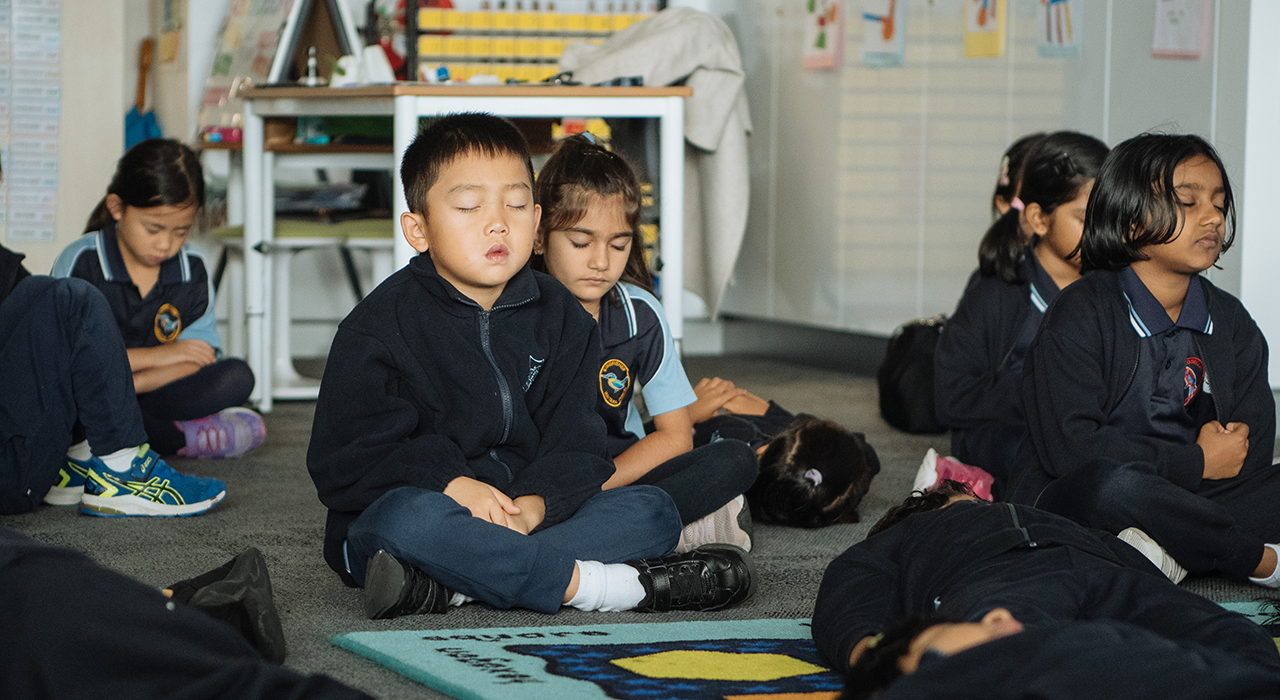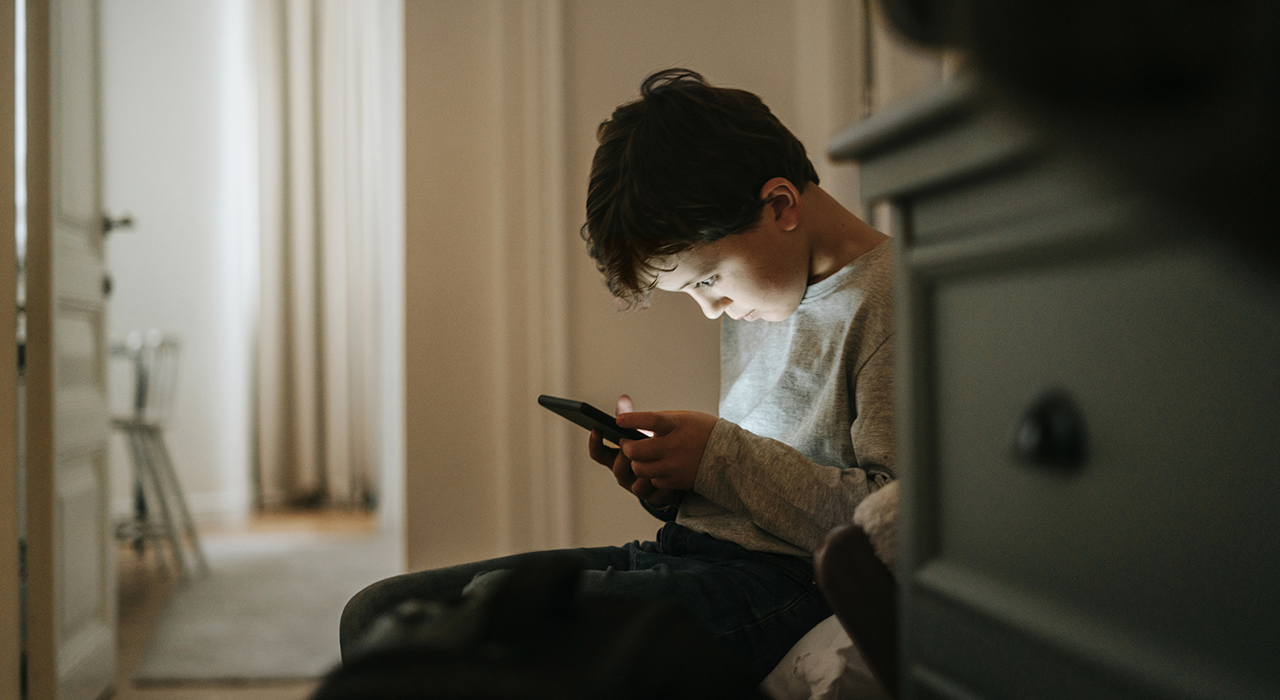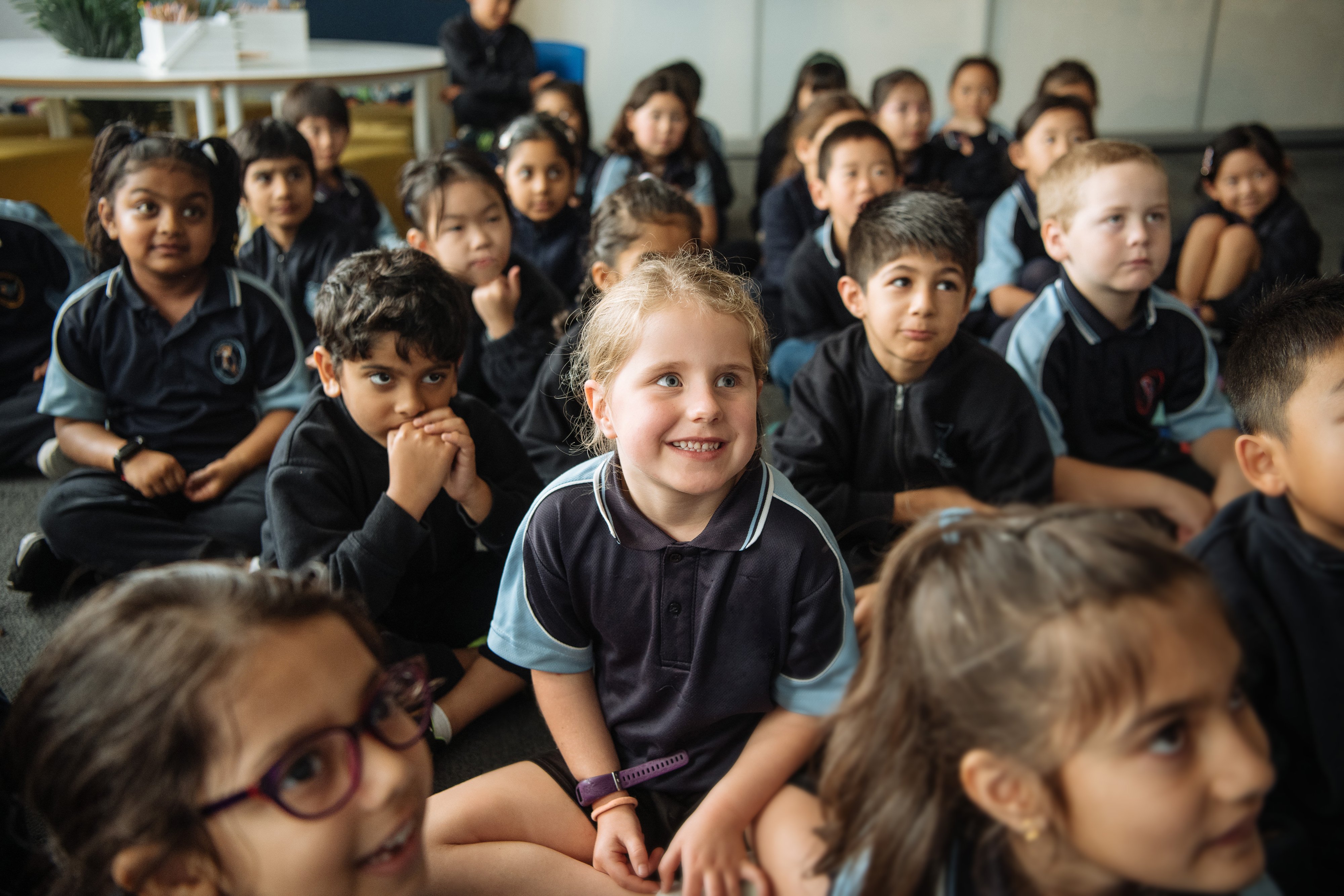Anxiety can be one of the most impactful struggles students face in classrooms today.
From academic development through to building imperative social skills, anxiety can hinder a student’s wellbeing on a number of levels. A challenge for both student and teacher, navigating and managing classroom anxiety is a team effort and is fast becoming an essential skill in the modern teacher’s toolbox.
To effectively support an anxious student, we can start by understanding what anxiety actually is. Often a misunderstood emotion, anxiety is defined to be the overwhelming feeling of fear, dread and in some cases, catastrophe. It can also manifest in a range of mental and physical symptoms.
When anxiety lasts a long time and starts to interfere with daily life, mental health professionals may diagnose it as a psychiatric disorder—meaning it causes significant distress and makes everyday functioning harder for the person and those around them.
Smiling Mind’s 2024 State of Mind report reveals that 42% of Australian children aged 4 to 12 are grappling with symptoms of anxiety, highlighting just how common this is. The Australian Psychological Society further notes a recent close to doubling (45%) of diagnosed Social Anxiety Disorder among 6-12s, making it one of the largest considerations in child mental wellbeing and education (Nov 22).
Research shows that early intervention can make a real difference in improving student mental health and wellbeing. And with a better understanding of the potential causes and symptoms, we can support students to build mental fitness skills to manage feelings of anxiety, empowering them to thrive both in and out of the classroom.
Causes of Anxiety in Students
The cause of anxiety in students will be unique to every individual. However, in a broad sense, chronic anxiety can stem from three generalised factors:
1. Environmental factors
Sometimes, an unavoidable traumatic event can lead to spikes of anxiety in a child. In some cases, these experiences lead to reactive anxiety—a more short-lived emotional state directly linked to an event or situation.
Similarly, higher-stress situations in a school or classroom environment can cause anxiety in students; for example:
- Bullying
- High / unnecessary demands on students' performance and achievements
In other cases, a longer-term anxiety disorder may develop, especially if early intervention and support isn’t provided.
Example of these traumatic or high stress events can look like:
- Divorcing parents
- Moving homes or cities
- A death in the family
If left unaddressed, it can lead to long-term detrimental physical, mental and social health consequences.
2. Family circumstances
For others, anxiety disorders may stem from familial dynamics, and how emotion is expressed at home:
- When a parent or caregiver models anxious or fearful behaviour, a child can very quickly pick up and mirror these responses.
- Overtime, this modelled behaviour of worry and dread can cause a child to self-impose restrictions and apply anxiety behaviours to daily life, reducing their sense of autonomy.
- Guardians who also place too much attention on their child’s mood and happiness can cause their child to do the same. Children in this position can develop a hyper-awareness of any and all discomfort they’re feeling. This awareness often leads to overthinking and spiralling thoughts, creating space for anxiety to develop.
3. Biological
Some people are more biologically predisposed or “at risk” of developing anxiety disorders. These people tend to have:
- Imbalances of the “happy” neurotransmitters in our brain—serotonin and dopamine.
- When these neurotransmitters aren’t being adequately produced or properly sent around the body, we can experience unexpected dips and peaks in mood and mental alertness.
- We can also experience physical symptoms like difficulty in regulating body temperature, causing even more discomfort and worry.
Signs and symptoms to look out for
Anxiety will manifest itself differently in every student. Some students might withdraw and become quiet, while others may become more outspoken and outwardly frustrated.
While it may not look the same for every student, knowing the different ways it might show up can help us notice when a student might need some extra support.
Behavioural symptoms and signs:
- Difficulty concentrating in class
- Withdrawn or increased dissociation
- More volatile behaviour with increased anger outbursts and irritability
- Shyness and avoiding social engagement
- Low self-esteem and increased negative self talk
- Expression of continuous, irrational fear or worry for daily tasks
- Hesitancy or refusal to extend their own learning (for example: not wanting to read aloud in the classroom)
- Reduced healthy risk-taking in their learning (this often looks like avoidance of challenges for fear of making a mistake)
Physical symptoms and signs:
- Frequent aches and pains (upset stomach and head being the most common)
- Increased fidgeting/inability to sit still
- Frequent trips to the bathroom or frequent sick bay visits
- Constantly seeking and demanding the presence of a comfort figure (e.g. separation anxiety)
- Exhaustion due to poor sleep
- Tense muscles and sweaty palms
The role of educators in managing anxiety in the classroom
Early intervention for anxious kids can make a difference. That's why holistic education needs to include wellbeing—the benefits are too significant not to.
Anxiety is a tricky, multi-layered experience and can’t be fully addressed in the classroom alone. Educators can think about supporting students experiencing anxiety with three key steps, while understanding that sometimes additional intervention may need to be considered.
Before stepping into the classroom1. Educate yourself on anxiety disorders Understanding anxiety and how it can present itself is the first step to helping your more anxious students. Knowledge is power. 2. Consider your lesson plans Students with anxiety may not respond as effectively to standard lesson plans as other students. How you accommodate those students will vary depending on their symptoms. Consider your lesson plan and ask yourself some questions:
Adjust your plan accordingly and remember to communicate your plan with the students to ease worry. 3. Assess whether you need extra support Some students require more support than others when dealing with anxiety symptoms. Requesting extra support via a teacher’s aide can help action the accommodations required to support your anxious students, while still progressing the lesson plan for the entire class. |
In the classroom1. Create and foster a healthy bond with the student Develop trust between yourself and your student to help to foster an environment for more open communication and to safely express vulnerability. This type of relationship will help the student express their anxious thoughts and be more reciprocal to your efforts to help manage their anxiety in the classroom. 2. Respect your students' feelings When anxiety symptoms begin to present themselves, we can begin to recognise and acknowledge the emotion behind these behaviours. This shows the student we’re aware and can empathise with their situation. Avoid empowering these worries and instead, use your relationship with the student to encourage naming and facing their worries with your support. 3. Know your classroom expectations and accommodations Communicating expectations is key for all students, especially for those managing anxiety. These expectations should cover both:
Studies show that teachers who express high expectations of their students, encourage better student engagement and social belonging, although accommodations to these expectations may be necessary when a student is experiencing anxiety symptoms. |

Supporting mental fitness beyond the classroom1. Teach your students about healthy choices Physical and mental health are linked. Teaching students how to support their physical health through movement, good eating and sleeping habits will help them develop healthy routine patterns early. Keep family members up to date with your anxiety strategies in the classroom. Encourage similar accommodations at home to try and create a consistent approach to reducing anxiety and boosting wellbeing. 3. Help students build resilience Anxiety in the classroom normally filters into daily life for most students. By taking the time to help support students to recognise their triggers and symptoms, you’re helping to develop their ability to self-recognise and over time, self-regulate their anxious reactions. |
Supporting your students’ mental wellbeing doesn’t have to be daunting. Arm yourself with the correct knowledge, tools and classroom strategies to manage student anxiety with Smiling Mind's Trauma-informed Practice in Education course—a 10-hour, self-paced program that teaches how to recognise and respond when a child is triggered, creating a trauma-informed learning environment.
Or explore the Smiling Mind Primary School Program, designed to build mental fitness skills in students through engaging, evidence-based activities tailored for the classroom.












.jpg)





